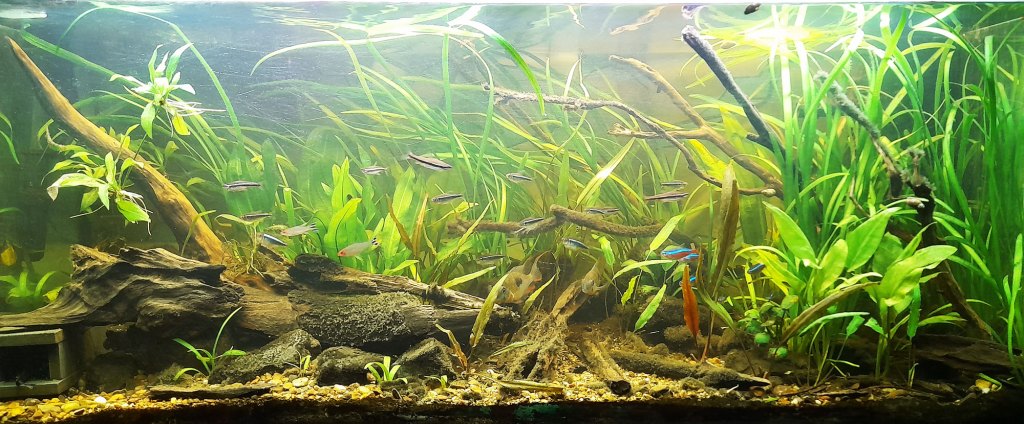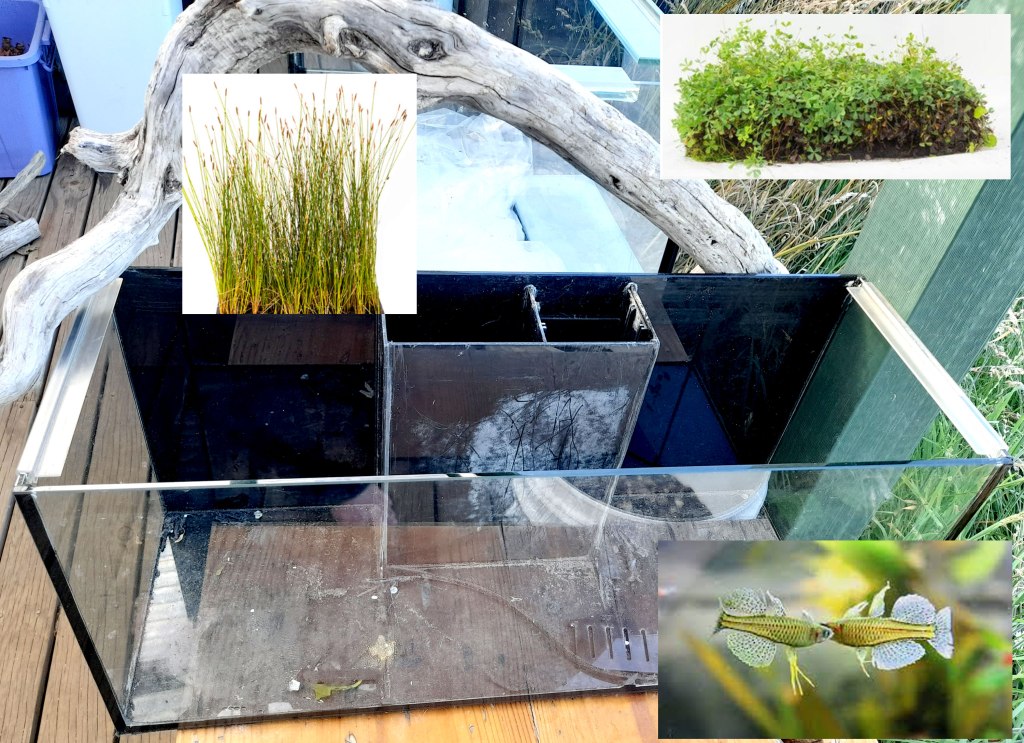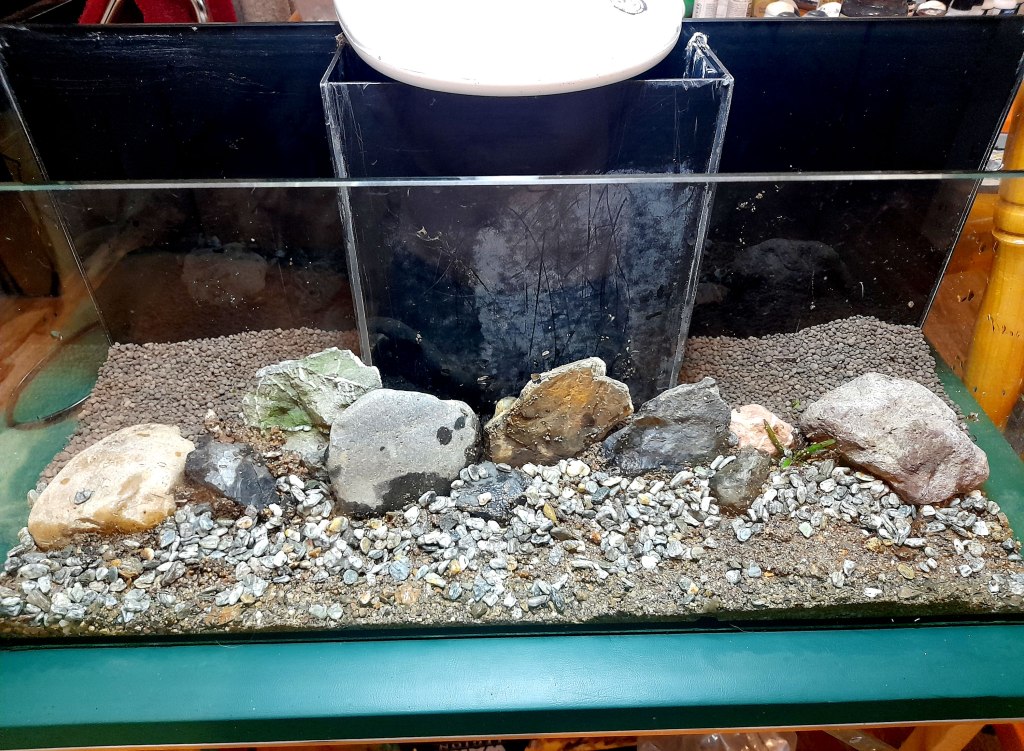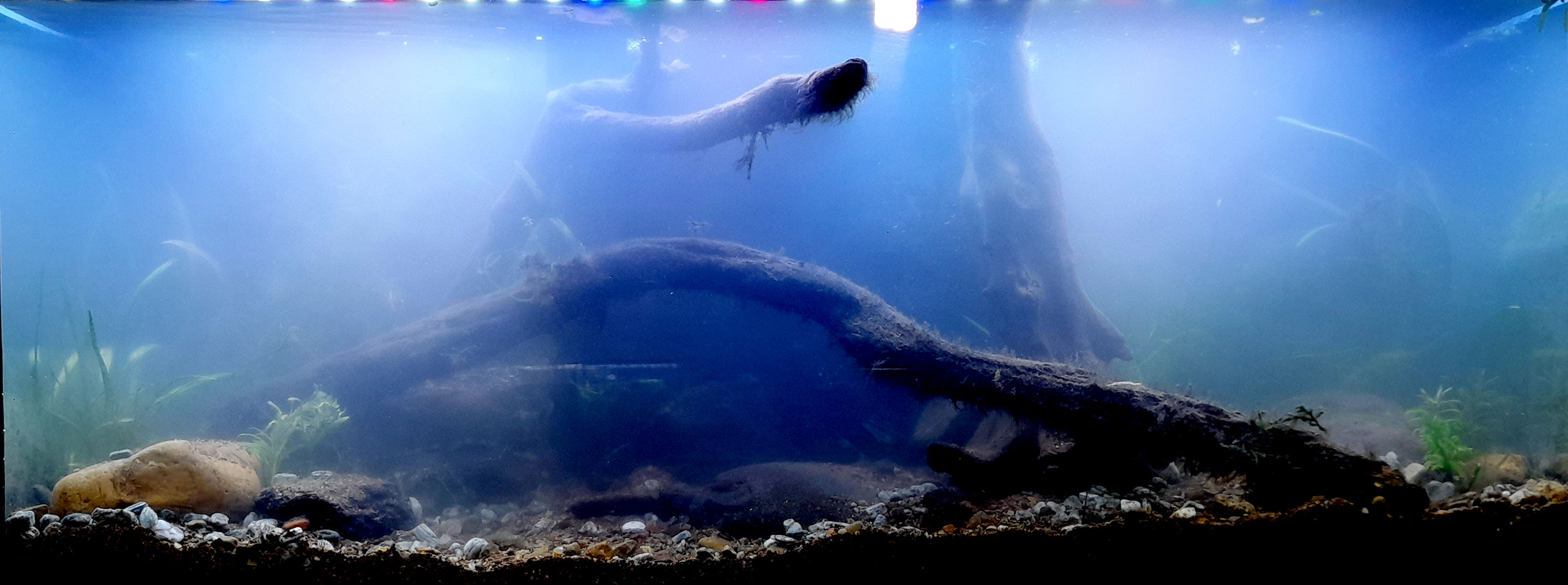I have a few different ways of setting up my Aquariums for different purposes.
I have some aquariums that are setup more as display tanks where I can watch my plants and favourite fish live and breed in the most natural habitat I can create.
These tanks/aquariums will usually have some soil like organic potting mix or aqua-soil as a base with river sand/gravel capping it on top. Both layers will usually be at least around an inch thick giving rooted plants like Swordplants a good depth for their roots for the plant to flourish.
My main passion is breeding Dwarf Cichlids such as the Rams and Apistogramma so most of my tanks are designed around keeping and breeding those fish, each of my tanks creating a safe habitat for Dwarf Cichlid’s.
I also use these tanks to house various Tetras and Rainbowfish which I can take out to breed in special set ups when ever they are fat and ready to spawn.

The Tetras are not just there for show, they are an essential part of the Amazon eco-system, just like catfish. People who breed Dwarf Cichlids will know about “dither fish”. A school of small Tetras swimming out in the open will help make your Dwarf Cichlids feel more comfortable and be more active.

Some aquariums I have are more temporary setups, or special breeding setups designed for one puropose only; to breed a specific type of fish.
Sometimes for smaller shallow tanks, breeding tanks etc. I like to use small bonzai pots for my rooted plants, where I can give them a depth of soil and place a root tab for a Swordplant or Cryptocoryne.
What ever the setup there is always one running theme… plants. I use plants in every single tank, even the darkest barest breeding tank will be filled with moss, floating Wisteria and potted plants.
I pulled this running log from my Facebook page to show how I set up a basic 30L planted aquarium.
Setting up a low-tech Planted Aquarium…
I find some fish really need a proper biotope aquarium set up to really appreciate them at their best and one of those fish for me is the tiny Spotted Blue-Eyes. I have a colony of these nano fish and have always wanted to set them up in their own display tank so they can live and look their best.
Around 6 months ago I procured one of those 3 bay Betta tanks where the filter, heater etc can be hidden away in a little compartment stashed away at the back. I’ve always wanted to play with one of these tanks.
I decided to use it for my Blue-Eye display tank, removing the inside dividers nice and tidy, I can insert a rectangle sponge pad in the filter section with a small pot plant on top growing immersed. When I clean the filter just pop the plant out and clean the sponge, done. There is a second compartment in the back for the heater and pump which can be adjusted.
My plan is to set it up like a miniature replica of a running stream from where they originated in North Queensland.
A quick google search and you can find all sorts of awesome inspiration from anywhere in the world. Here’s a really cool link to some Australian Qld native aquatic plants for those interested in biotopes: https://australianecosystems.com.au/nursery/aquatic-plants/ There are many resources online, AquaGreen is a really good one for native Au fish and aquatic plants especially from the NT.

Next step… clean up the tank ready for scaping, then the fun begins!
Using what minimal materials I had on hand at the second I put together this little hard-scape. Coming from a landscaping background I love using rocks as retaining walls for my garden beds.
I start with a bed of natural sand then build the wall on that so the rocks aren’t touching the base glass.
Then I build my wall starting with the largest rocks on hand and work my way down to the smallest rocks. Sometimes for that extra touch I like to add some gravel around the edge of the wall to help blend it together from rock to sand.
After the wall is complete I fill in the garden beds with aqu-soil or cheap organic potting mix works just as well on a budget.
—–
Next step is to cap the soil with some sand so you don’t end up with a filthy cloudy algae tank. As I slowly fill the tank to soil level I’ll add the plants, then fill the rest of the way.

… I scouted around my aquariums and found some nice small pieces of driftwood that would fit perfectly into the scape then played around with that for a while.
Once happy I started throwing in a couple of plants. I chose some grassy plants I had, a bushy stem plant and some moss to get things moving and provide some instant habitat for my little Blue-Eyes.
I filled the tank up with rainwater and set up the pump and sponge filter. Adding a sponge filter from another healthy tank will kick start this tank while I play around with the scape.
I’ve also got this idea of using driftwood as a natural light stand, “crawling” over the top where Pothos vine etc. can also grow along.
WIP. I’ll post a pic tomorrow once things have cleared up as well as updates as this new tank cycles, settles in and eventually the fish are introduced..



The new Blue-Eye tank has cleared up a bit. I’m liking how it looks already. I’ll play around with this scape over the next few days and once I’m happy and it fully cycles I’ll add some fish next week.

… Update on the new Blue-Eye tank. I procured some Hair-grass and added some more stem plants to finish off the planting for now. Time to let it grow in over the next month or two and see how it looks then.
The first 4 Spotted Blue-Eyes have now been added to test the waters of this new aquarium so I can see how they like it and fine tune things if need be. This tank is only around 30L volume so I’ll probably only house my little colony of around 10 Blue-Eyes in here and maybe add a couple of little Oto catfish later.
I’m trying this tank out with no heater for something different. As it sits atop my fridge it should hopefully maintain a good temperature without a heater. See how it goes throughout the year. So far it’s usually sitting between 25-28 since start up.

The Spotted Blue-Eye tank is settling in nicely. I added another three fish today bringing the total to seven. This will help them feel more comfortable and I can see how the tank holds this many fish, if I want to add more and how many.
I want this to be a holding tank for my main population where they can breed naturally without any threat. I might consider adding a pair of Otto catfish later and see if the two can both live and breed together as naturally as possible and hopefully down the track a self sustaining population of both fish.



